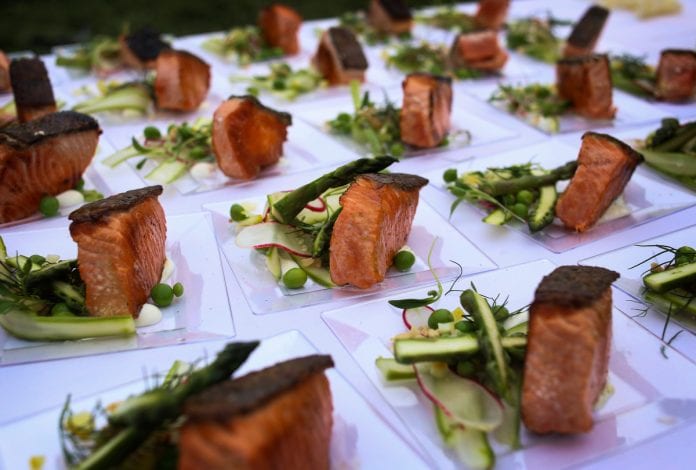
A visitor to the seafood department of a major Anchorage retail shop stared with surprise at the neatly wrapped fillet marked as fresh Copper River sockeye salmon.
Was it really a Copper River sockeye?
Seafood suppliers for the store can trace the fish back to where it was caught, but where that fish is really from, what river it was born in, is a more complex question.
If sockeye salmon are anything like Chinook salmon, not all fish caught in the Copper River District originated from natal streams within the Copper River; it’s likely that some fish are just passing through on their way to natal streams elsewhere and were nabbed in the harvest.
“We know from work done with Chinook salmon, that while most of the fish captured in the Copper River district originate from the Copper River, a smaller fraction originates from all over the place,” said Chris Habicht, lab director and principal geneticist at the Alaska Department of Fish and Game in Anchorage. “These non-local fish are coming back to their natal streams, but their migratory paths take them through the district.”
“Just because a Chinook salmon originated from a non-Copper River drainage does not preclude it from being legitimately captured in the Copper River District,” he said.
“We have long-term studies in Southeast Alaska showing Chinook salmon fisheries catch many fish headed south to British Columbia and the (Lower) 48) United States. Southeast Alaska is a major migratory pathway for these stocks,” he said.
The Bristol Bay sockeye salmon fisheries, by comparison, generally harvest local fish, with the millions of sockeyes captured there annually headed for natal streams in Bristol Bay. Bristol Bay streams are at the head of a bay and the fishing districts are generally not along the migratory pathway of non-Bristol Bay stocks.
ADF&G estimated the genetic stock composition of the commercial harvest of Chinook salmon in the Copper River District from 2013-2017. The project applied the available baseline of genetic information representing Chinook salmon populations from within the Copper River drainage, around the Gulf of Alaska, and from southern populations to estimate the relative stock compositions of Chinook salmon harvests in the Copper River District commercial fishery.
Results showed that most of the fish in the Copper River commercial fishery originated from Copper River populations, with some variation across years, which is consistent with findings from previous studies, researchers said.
The unusually high proportions of nonlocal Chinook salmon in the commercial harvest occurring during two of the study years – 2014 and 2015 – aligned with other reports of large numbers of out-of-area Chinook salmon in commercial fisheries throughout the southern and southeastern seaboards of Alaska.













